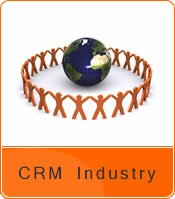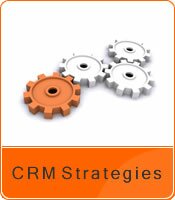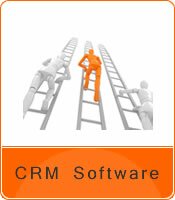
CRM Industry
CRM Industry Profile
Software as a Service
Hosted vs On Premise
CRM Industry Consolidation
 CRM Strategies
CRM Strategies
CRM Strategy
Software Selection
Best Practices
 CRM Software
CRM Software
Salesforce.com CRM Review
NetSuite CRM Review
SAP CRM Software Review
Aplicor CRM Review
SugarCRM Software Review
Consona / Onyx CRM Review
The Ultimate Guide to Choosing the Best CRM Software for Your Business
In the labyrinth of modern business management, Customer Relationship Management (CRM) software shines as the Ariadne's thread, leading your organization to success. But not all threads are spun equal, and in the bustling market of CRM solutions, navigating to the best one can be daunting.
Unraveling the CRM Maze
Understanding CRM is crucial. At its heart, CRM is about relationships ? managing, nurturing, and, more importantly, harnessing them to grow your business. It's a philosophy married to technology, where software tools facilitate every touchpoint in the customer lifecycle, from marketing and sales to service and beyond.
With customer expectations evolving at the speed of light, the right CRM platform can be the difference between stagnant operations and poised growth. It?s clear that the role CRM plays in modern business is not just a supplementary one; it is foundational. But how do you pick the right CRM when the market is flooded with choices?
Defining Your Path through the CRM Woods
When choosing a CRM, there's no one-size-fits-all answer. Each business has its unique set of goals, processes, and customer needs. It's essential to chart your CRM course, bearing in mind the primary objectives:
- Assessing business needs and pain points
- Defining the budget
- Identifying user expectations and adoption challenges
- Evaluating scalability
- Evaluating scalability
- Understanding the required integrations
- Ensuring data security
Keep these pillars in mind as we traverse through some of the leading CRM solutions, specifically tailored to cater to small businesses, pioneering sales teams, and savvy marketing departments.
For Small Businesses: The Nimble Navigators
Small businesses operate under tight resource constraints, which makes efficiency and choice of CRM vital. Cutting-edge features paired with user-friendly interfaces are must-haves. Here are three CRMs that have been lauded for their effectiveness in this segment.
Apptivo: Best for a Suite of Business Apps
Apptivo stands out in the crowded field of CRM solutions tailored for small enterprises by offering an all-encompassing array of integrated business applications. With its foundation in versatility, it caters to a wide range of business needs from CRM functionalities to project management, and invoicing to supply chain management. For businesses looking into how to build a CRM system from scratch, integrating such a system with Apptivo?s suite could provide valuable insights into customizing solutions that perfectly align with specific business processes and goals. This approach not only offers a holistic view of customer relationship management but also seamlessly blends it with other essential business functions, ensuring a comprehensive toolkit for small enterprise management.
This seamless integration ensures that small enterprises can administer various facets of their operations through a singular platform, facilitating streamlined processes and enhanced operational efficiency. With Apptivo, small enterprises are afforded access to a holistic tool that not only facilitates customer relationship management but also supports the comprehensive management of their company?s operational necessities.
Freshworks CRM: A Fresh Approach for Growing Ventures
Freshworks is exemplary for its depth of features and user-friendly interface, offering powerful pipeline management, email integration, and robust reporting tools. With custom modules, its scalability grows with your business?perfect for ambitious enterprises.
Zoho CRM: The Zesty All-in-One Solution
Zoho stands out for its comprehensive suite of applications, providing tools for sales, marketing, service, and beyond, all integrated within its CRM platform. Zoho's flexibility is a boon for smaller entities, where adaptability is the name of the game.
HubSpot CRM: The Heart of Inbound Marketing
HubSpot's strengths lie in its seamless integration with its marketing and sales hubs. Designed with the inbound methodology in mind, it empowers small businesses to attract, engage, and delight customers with its user-friendly yet powerful toolkit.
Zendesk Sell: The Premier CRM Solution with Seamless Help Desk Integration
Zendesk Sell distinguishes itself with an unparalleled emphasis on melding CRM capabilities with help desk solutions, crafting a cohesive experience for both sales and support teams. It shines by consolidating customer interactions from diverse channels into a single, well-organized flow.
This ensures complete alignment among team members regarding customer history and preferences. Such integration is pivotal for companies that view customer service as an integral element of the sales journey, enabling a fluid handoff between sales and support. Equipped with a powerful suite of features designed to bolster customer relationships and streamline support operations, Zendesk Sell stands as the quintessential solution for businesses eager to synergize their CRM and customer service endeavors with effectiveness.
For the Pioneering Sales Team: The Adventurers in the CRM Arena
A high-performing sales team demands a CRM that enhances, not hinders, their efforts. Customization, automation, and mobility are the watchwords. Here are three CRMs engineered to empower sales personnel.
In the dynamic landscape of technology investments, understanding how to value a SaaS company is crucial for both entrepreneurs and investors. Valuing a SaaS business involves more than just looking at current revenues or profits; it requires a comprehensive analysis of several key performance indicators (KPIs) such as Monthly Recurring Revenue (MRR), Customer Acquisition Costs (CAC), Lifetime Value (LTV) of a customer, churn rate, and the growth potential in the company?s specific market niche. These metrics offer insights into the company's sustainability, scalability, and long-term profitability. Additionally, considering the unique business model of SaaS companies, which often prioritize growth and market capture over immediate profitability, valuation methodologies might also incorporate future revenue projections and market size estimation. As the SaaS industry continues to evolve, staying informed about the latest valuation models and market trends becomes indispensable for accurately assessing a company's worth.
Salesforce: The Force Continues to Be with Them
Salesforce has become synonymous with CRM, offering the most extensive range of tools for customization and automation. For large sales teams or those with complex processes, its scalability is matchless.
Pipedrive: The Power of Progress
Pipedrive prides itself on simplicity and focus, designed explicitly for sales teams. Its visual sales pipeline is intuitive, and its automation features ensure no deal falls through the cracks.
Insightly: Intelligent and IntuitiveCRM
Insightly marries CRM with project management in a seamless manner. It's an ideal choice for sales reps who need to manage long-cycle relationships, with its robust linking of projects to customer records.
For the Masterful Marketers: Strategic Commanders in the CRM Battlefield
Marketing thrives on data-driven strategies and seamless alignment with sales. Integration, analytics, and campaign management are paramount. Here are three CRMs that reflect these needs.
HoneyBook: The Top Choice for Comprehensive Client Management
HoneyBook stands out as an exceptional tool for businesses in need of superior client management solutions. It excels at simplifying client interactions, seamlessly guiding them from the initial inquiry to the final invoice. This platform is especially beneficial for service-oriented businesses such as photographers, designers, and event organizers. HoneyBook features automated workflows, integrated payment systems, and customizable templates for both proposals and contracts, streamlining the management of client projects. It enables users to offer a smooth and professional experience to their clients, significantly boosting client satisfaction and loyalty. For businesses that rely heavily on strong client relationships, HoneyBook provides a comprehensive solution to foster and maintain these vital connections effectively.
Marketo Engage: The Market Maven
Marketo Engage, now part of Adobe, specializes in B2B marketing, offering marketing automation, email marketing, and lead management. Its robust analytics and AI capabilities provide actionable insights for top-of-funnel success.
Agile CRM: Adaptivity at Its Core
Agile CRM combines sales and marketing solutions with service automation, all within a single platform. Its robust email marketing tools and social integration make it a comprehensive choice for intuitive marketing strategies.
Salesmate: Ideal for Integrated Calling and Messaging
Salesmate distinguishes itself as a premier choice for businesses that prioritize seamless communication with their leads and customers. Its standout feature is the effortless integration of built-in calling and texting directly within the CRM platform. This key functionality allows sales teams to connect with leads without having to exit the application, promoting a more streamlined and cohesive workflow.
Enhanced by capabilities like call recording, performance analytics, and auto-dialing, Salesmate not only streamlines communication but also elevates the sales process by offering valuable insights and efficient tools. Its intuitive interface and competitive pricing render Salesmate the ideal solution for small to medium-sized enterprises eager to foster close relationships with their clients while refining their sales tactics.
ActiveCampaign: Engagement on Overdrive
ActiveCampaign prides itself on customer and lead engagement through multiple integrated channels. With advanced email marketing and automation capabilities, it's perfect for marketers focused on the full customer lifecycle.
Nimble CRM: Ideal for an Uncomplicated Pricing Model
In the realm of customer relationship management (CRM) solutions, navigating the complexities of pricing models can prove daunting. Nimble CRM sets itself apart by offering a clear, straightforward pricing strategy tailored to meet the distinct needs of small businesses and entrepreneurs. In contrast to other CRMs, which often incorporate convoluted, tiered pricing with hidden fees or necessitate additional expenses for vital features, Nimble provides an accessible, feature-rich platform at an affordable price. This strategy not only makes high-quality CRM capabilities available to businesses of all sizes but also enables more effective budget planning with transparent CRM costs.
SharpSpring: The Premier Choice for Advanced Marketing Automation Capabilities
SharpSpring sets itself apart in the crowded field of marketing automation with its robust features designed to streamline and enhance marketing initiatives. Renowned for its versatility, SharpSpring caters to businesses looking to polish their marketing strategies through features like advanced email customization, the ability to identify site visitors, and an intuitive campaign creation tool. Coupled with its CRM capabilities, SharpSpring empowers organizations to effectively manage leads, track customer engagements, and close deals with greater precision. Highlighting its dedication to flexibility, SharpSpring offers month-to-month contracts and a competitive pricing model, making it an attractive option for companies aiming to elevate their marketing performance without being tied down by long-term commitments.
Freshsales: Ideal for AI-Enhanced Sales Capabilities
Freshsales stands out by harnessing AI to boost sales processes, making it a crucial tool for sales teams striving for efficiency and effectiveness. Its AI-driven insights help in identifying and prioritizing leads and opportunities, ensuring sales efforts are concentrated on the most promising prospects. Moreover, Freshsales introduces smart workflow automation, allowing sales teams to streamline routine tasks and focus on securing deals. The CRM's sophisticated analytics provide sales managers with real-time data for well-informed decision-making. By committing to AI for sales improvement, Freshsales distinguishes itself, making it the preferred CRM for teams seeking to use technology for a competitive advantage.
Beyond the Basics: Five Revelations in the World of CRM Software
- The Hidden Power of CRM Analytics: Beyond managing relationships, CRM software harnesses the power of data analytics, providing deep insights into customer behavior patterns. This underutilized aspect can predict future buying trends, optimize marketing strategies, and personalize customer interactions, leading to increased sales and customer satisfaction.
- Automation Isn't Just About Efficiency: While automation within CRM systems is often heralded for streamlining tasks, its true value lies in its ability to enhance personalization. By automating routine communications, companies can focus on crafting personalized messages and strategies, making each customer feel uniquely valued.
- Social CRM - The New Frontier: With the rise of social media, CRM has evolved to integrate these platforms, creating a new dynamic in customer engagement. Social CRM allows businesses to listen, interact, and engage with customers on their preferred platforms in real-time, fostering stronger relationships and building brand loyalty.
- Mobile CRM - Business on the Go: The advent of mobile CRM has revolutionized how sales teams operate, offering access to customer data anytime, anywhere. This mobility leads to faster decision-making, immediate updates from the field, and the ability to stay connected with customers, enhancing the overall responsiveness and agility of businesses.
- The Linchpin of Customer Experience: In today's competitive landscape, CRM software has emerged as the linchpin of customer experience strategies. By providing a 360-degree view of the customer, CRM enables businesses to deliver a seamless, consistent, and personalized experience across all touchpoints, setting the stage for long-term loyalty and advocacy.
The Final Considerations
Whichever CRM you choose, the selection process doesn't end with picking the software. Implementation, user training, and ongoing support are critical aspects of CRM success. Selecting a CRM isn't just a technology purchase; it's a partner you'll rely on to fulfill your customer-centric strategy.
In conclusion, the best CRM is not the one with the most bells and whistles, but the one that seamlessly aligns with your business goals and processes. It's the one your team adopts with enthusiasm, and the one that grows with your customer-centric vision. Choose wisely, and the right CRM will empower your business to turn customer relationship management into customer relationship magic.
![]()
![]() Search For SolutionsThe CRM Software 360 database is the most up to date and freely available on the Internet.
Search For SolutionsThe CRM Software 360 database is the most up to date and freely available on the Internet.

![]()
![]()
Top Downloaded White Papers
- CRM Select Smart
- Aberdeen CRM SaaS Report
- 5 Step CRM Software Selection
- 10 Myths of Hosted CRM
- Successful CRM Negotiation
- Public Sector SAAS
- Contact Center Technologies
![]()
CRM Industry Websites
![]()


